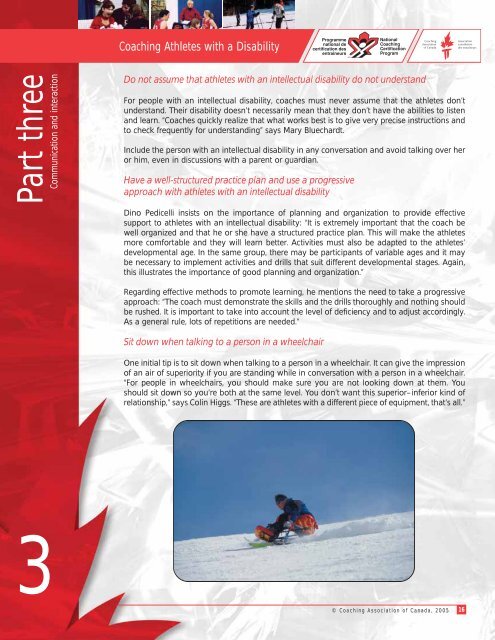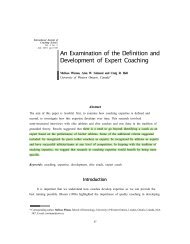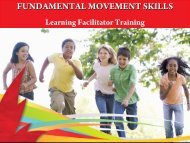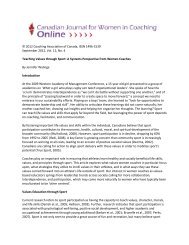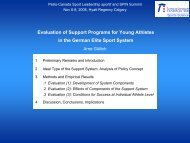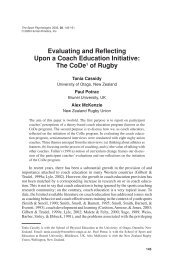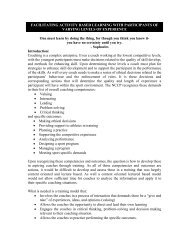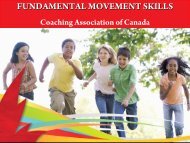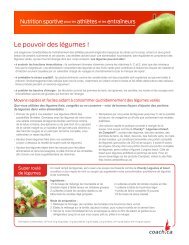Coaching Athletes with a Disability - Coaching Association of Canada
Coaching Athletes with a Disability - Coaching Association of Canada
Coaching Athletes with a Disability - Coaching Association of Canada
- No tags were found...
You also want an ePaper? Increase the reach of your titles
YUMPU automatically turns print PDFs into web optimized ePapers that Google loves.
<strong>Coaching</strong> <strong>Athletes</strong> <strong>with</strong> a <strong>Disability</strong>Part threeCommunication and interactionDo not assume that athletes <strong>with</strong> an intellectual disability do not understandFor people <strong>with</strong> an intellectual disability, coaches must never assume that the athletes don’tunderstand. Their disability doesn’t necessarily mean that they don’t have the abilities to listenand learn. “Coaches quickly realize that what works best is to give very precise instructions andto check frequently for understanding” says Mary Bluechardt.Include the person <strong>with</strong> an intellectual disability in any conversation and avoid talking over heror him, even in discussions <strong>with</strong> a parent or guardian.Have a well-structured practice plan and use a progressiveapproach <strong>with</strong> athletes <strong>with</strong> an intellectual disabilityDino Pedicelli insists on the importance <strong>of</strong> planning and organization to provide effectivesupport to athletes <strong>with</strong> an intellectual disability: “It is extremely important that the coach bewell organized and that he or she have a structured practice plan. This will make the athletesmore comfortable and they will learn better. Activities must also be adapted to the athletes’developmental age. In the same group, there may be participants <strong>of</strong> variable ages and it maybe necessary to implement activities and drills that suit different developmental stages. Again,this illustrates the importance <strong>of</strong> good planning and organization.”Regarding effective methods to promote learning, he mentions the need to take a progressiveapproach: “The coach must demonstrate the skills and the drills thoroughly and nothing shouldbe rushed. It is important to take into account the level <strong>of</strong> deficiency and to adjust accordingly.As a general rule, lots <strong>of</strong> repetitions are needed.”Sit down when talking to a person in a wheelchairOne initial tip is to sit down when talking to a person in a wheelchair. It can give the impression<strong>of</strong> an air <strong>of</strong> superiority if you are standing while in conversation <strong>with</strong> a person in a wheelchair.“For people in wheelchairs, you should make sure you are not looking down at them. Youshould sit down so you’re both at the same level. You don’t want this superior–inferior kind <strong>of</strong>relationship,” says Colin Higgs. “These are athletes <strong>with</strong> a different piece <strong>of</strong> equipment, that’s all.”3© <strong>Coaching</strong> <strong>Association</strong> <strong>of</strong> <strong>Canada</strong>, 200516


